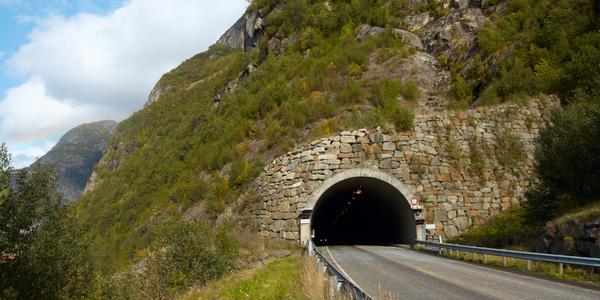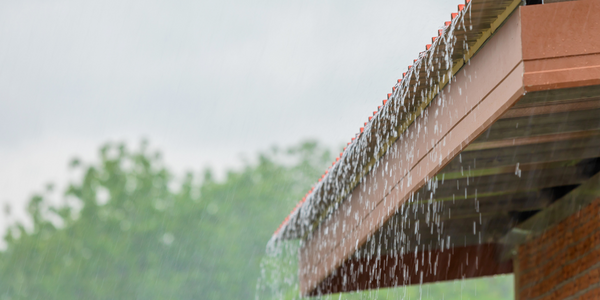Customer Company Size
Large Corporate
Region
- Europe
Country
- Norway
Product
- COMSOL Multiphysics
Tech Stack
- Simulation Software
- Acoustic Modeling
Implementation Scale
- Pilot projects
Impact Metrics
- Cost Savings
- Productivity Improvements
- Customer Satisfaction
Technology Category
- Analytics & Modeling - Digital Twin / Simulation
- Analytics & Modeling - Predictive Analytics
Applicable Industries
- Buildings
- Construction & Infrastructure
Applicable Functions
- Facility Management
- Quality Assurance
Use Cases
- Building Automation & Control
- Building Energy Management
- Predictive Maintenance
Services
- Software Design & Engineering Services
- System Integration
About The Customer
The Norwegian Geotechnical Institute (NGI) is an international center for research and consulting within the geosciences. They have been running investigative programs for several years on behalf of the Norwegian Defence Estate Agency. NGI focuses on understanding and mitigating the effects of low-frequency sound waves, particularly in the context of building vibrations caused by external noise sources such as airports, wind turbines, military sites, and hospitals with helicopter landing pads. Their research aims to alleviate the annoying vibrations that residents experience due to these low-frequency sound waves. NGI employs advanced simulation software and laboratory testing to model and analyze the transmission of sound waves within buildings, enabling them to recommend design adjustments and countermeasures to reduce these disturbances.
The Challenge
Anyone who has slept near an airport will know the sensation — an early morning flight wakes you from sleep, not only because the engine is noisy but also because everything around you seems to be shaking. Likewise, people living near wind turbines, military sites, or hospitals with helicopter landing pads often complain that windows rattle and everyday objects buzz when there is external noise. More puzzling for them is the fact that even when they can discern no sound, they may still notice irritating vibrations. If the response of the sound is 20 vibrations per second (20 Hz) or less, it is described as infrasound, meaning that the original sound is not usually audible to the human ear. The effects, however, are very easy to detect. As waves hit windows, spread to the floor, and affect internal walls, they induce a noticeable indoor vibration. Low-frequency sound waves are notorious for their potential to create annoying disturbances. Noise is part of modern life and there are formal standards that use sound pressure level measurements to recognize high-frequency sound waves at levels of sensitivity, intrusion, and danger for humans. According to Finn Løvholt of the Norwegian Geotechnical Institute (NGI), the generation of building vibration due to infrasound is an area of research that has not been explored extensively. For this reason, NGI, an international center for research and consulting within the geosciences, has been running investigative programs for several years on behalf of the Norwegian Defence Estate Agency.
The Solution
Løvholt and his colleagues decided to create a computer model that would allow them to pick apart the mechanism of low-frequency sound waves hitting and penetrating a building. They used the COMSOL Multiphysics® software to simulate a wooden structure with two rooms separated by a wall, closely mimicking the laboratory experiment setup. Within the model, they assigned a loudspeaker to one room, a microphone to the other, and placed various probes around the structure in order to monitor sound pressure levels and vibrations. Every component was carefully modeled, including the steel frame, the air cavity and studs in the wall, the windows, the plywood sheet, and the plasterboard. The team also had to recognize compound resonances created when two components are joined, such as two pieces of timber that are screwed together. The advantage of COMSOL Multiphysics is that it allows them to enter all the parameters needed to monitor. In particular, it enables them to couple physics, so they can, for example, look at the acoustics of open-air sound interacting with indoor structural dynamics. The coupling works both ways so they can identify feedback. This coupling is crucial for their analysis because sound waves can generate a huge range and variety of resonances. The model really allows them to see these. The NGI team then verified their simulation with laboratory testing of low-frequency sounds as they were transmitted through a wooden construction with two rooms. The motion of the wall and the sound pressure level are the main quantities measured, and results show very close correlation to the COMSOL Multiphysics model. The model shows that the transmission of sound within a building is governed by the way in which low-frequency waves interact with the fundamental modes of the building components, the dimensions of the room, and the way in which air leaks from the building envelope. Vibrations in ceilings and walls seem to be the dominant source of low-frequency indoor sound, with floor vibration driven by sound pressure inside the room.
Operational Impact

Case Study missing?
Start adding your own!
Register with your work email and create a new case study profile for your business.
Related Case Studies.

Case Study
Energy Saving & Power Monitoring System
Recently a university in Taiwan was experiencing dramatic power usage increases due to its growing number of campus buildings and students. Aiming to analyze their power consumption and increase their power efficiency across 52 buildings, the university wanted to build a power management system utilizing web-based hardware and software. With these goals in mind, they contacted Advantech to help them develop their system and provide them with the means to save energy in the years to come.

Case Study
IoT System for Tunnel Construction
The Zenitaka Corporation ('Zenitaka') has two major business areas: its architectural business focuses on structures such as government buildings, office buildings, and commercial facilities, while its civil engineering business is targeted at structures such as tunnels, bridges and dams. Within these areas, there presented two issues that have always persisted in regard to the construction of mountain tunnels. These issues are 'improving safety" and "reducing energy consumption". Mountain tunnels construction requires a massive amount of electricity. This is because there are many kinds of electrical equipment being used day and night, including construction machinery, construction lighting, and ventilating fan. Despite this, the amount of power consumption is generally not tightly managed. In many cases, the exact amount of power consumption is only ascertained when the bill from the power company becomes available. Sometimes, corporations install demand-monitoring equipment to help curb the maximum power demanded. However, even in these cases, the devices only allow the total volume of power consumption to be ascertained, or they may issue warnings to prevent the contracted volume of power from being exceeded. In order to tackle the issue of reducing power consumption, it was first necessary to obtain an accurate breakdown of how much power was being used in each particular area. In other words, we needed to be able to visualize the amount of power being consumed. Safety, was also not being managed very rigorously. Even now, tunnel construction sites often use a 'name label' system for managing entry into the work site. Specifically, red labels with white reverse sides that bear the workers' names on both sides are displayed at the tunnel work site entrance. The workers themselves then flip the name label to the appropriate side when entering or exiting from the work site to indicate whether or not they are working inside the tunnel at any given time. If a worker forgets to flip his or her name label when entering or exiting from the tunnel, management cannot be performed effectively. In order to tackle the challenges mentioned above, Zenitaka decided to build a system that could improve the safety of tunnel construction as well as reduce the amount of power consumed. In other words, this new system would facilitate a clear picture of which workers were working in each location at the mountain tunnel construction site, as well as which processes were being carried out at those respective locations at any given time. The system would maintain the safety of all workers while also carefully controlling the electrical equipment to reduce unnecessary power consumption. Having decided on the concept, our next concern was whether there existed any kind of robust hardware that would not break down at the construction work site, that could move freely in response to changes in the working environment, and that could accurately detect workers and vehicles using radio frequency identification (RFID). Given that this system would involve many components that were new to Zenitaka, we decided to enlist the cooperation of E.I.Sol Co., Ltd. ('E.I.Sol') as our joint development partner, as they had provided us with a highly practical proposal.

Case Study
Intelligent Building Automation System and Energy Saving Solution
One of the most difficult problems facing the world is conserving energy in buildings. However, it is not easy to have a cost-effective solution to reduce energy usage in a building. One solution for saving energy is to implement an intelligent building automation system (BAS) which can be controlled according to its schedule. In Indonesia a large university with a five floor building and 22 classrooms wanted to save the amount of energy being used.

Case Study
Powering Smart Home Automation solutions with IoT for Energy conservation
Many industry leaders that offer Smart Energy Management products & solutions face challenges including:How to build a scalable platform that can automatically scale-up to on-board ‘n’ number of Smart home devicesData security, solution availability, and reliability are the other critical factors to deal withHow to create a robust common IoT platform that handles any kind of smart devicesHow to enable data management capabilities that would help in intelligent decision-making

Case Study
Splunk Partnership Ties Together Big Data & IoT Services
Splunk was faced with the need to meet emerging customer demands for interfacing IoT projects to its suite of services. The company required an IoT partner that would be able to easily and quickly integrate with its Splunk Enterprise platform, rather than allocating development resources and time to building out an IoT interface and application platform.




